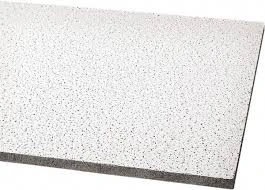8 月 . 09, 2024 01:40 Back to list
Exploring the Benefits and Installation Process of Drywall Ceiling Access Hatches for Your Home
Understanding Drywall Ceiling Hatches A Practical Guide
When it comes to designing and renovating spaces, efficiency and accessibility play crucial roles. One often-overlooked feature in both residential and commercial construction is the drywall ceiling hatch. These hatches provide important access points to areas such as ductwork, plumbing, and electrical systems hidden within ceilings. In this article, we will explore what drywall ceiling hatches are, their benefits, installation considerations, and maintenance tips.
What is a Drywall Ceiling Hatch?
A drywall ceiling hatch is a framed opening in a drywall ceiling that provides access to the space above, typically an attic, crawlspace, or ceiling cavity. These hatches can be designed to blend seamlessly with the surrounding drywall, offering both function and aesthetic appeal. They come in various sizes and styles, accommodating different access needs while maintaining a polished look.
Benefits of Using Ceiling Hatches
1. Accessibility One of the primary functions of a ceiling hatch is to provide easy access to vital systems installed above ceilings. Whether it’s for HVAC maintenance, electrical repairs, or plumbing inspections, having quick access can save time and labor costs.
2. Space Efficiency Ceiling hatches are particularly beneficial in tight spaces where traditional access methods may not be feasible. They allow homeowners and professionals to utilize every inch of their spaces effectively.
3. Aesthetic Versatility Modern drywall ceiling hatches can be customized to match the surrounding décor. This makes them ideal for both residential and commercial settings where style is just as important as functionality.
4. Safety and Compliance In many jurisdictions, building codes require access points for utility systems to ensure safety and compliance with regulations. Properly installed ceiling hatches can fulfill these requirements.
Installation Considerations
When installing a drywall ceiling hatch, several factors must be considered
drywall ceiling hatch

- Location Determine the most convenient location for the hatch, ensuring that it provides access to necessary systems without obstructing room usage or decor. - Size Choose a hatch size that accommodates the equipment or access needed. Larger openings may be necessary for extensive repairs, whereas smaller hatches might suffice for basic maintenance.
- Type Select the right type of hatch for your needs. Options include insulated hatches for energy efficiency, fire-rated hatches for safety compliance, and custom hatches designed for specific applications.
- Framing and Support Proper framing is essential for installing a drywall ceiling hatch. Ensure the surrounding drywall is appropriately reinforced to support the hatch and any potential load.
Maintenance Tips
To ensure the longevity and functionality of your drywall ceiling hatch, follow these maintenance tips
1. Regular Inspections Periodically check the hatch for any signs of wear, damage, or misalignment. Addressing issues promptly can prevent larger problems down the road.
2. Cleanliness Keep the area around the hatch clean and free of obstructions. This will ensure easy access and avoid unnecessary damage to the hatch mechanism.
3. Repairs If you notice any damage, such as cracks or paint chipping, make repairs as soon as possible to maintain both functionality and appearance.
4. Check Seals For insulated or weatherproof hatches, ensure that seals are intact and functioning, to prevent energy loss or moisture intrusion.
Conclusion
In conclusion, the drywall ceiling hatch is an invaluable component in modern construction, combining functionality with an appealing aesthetic. By understanding its benefits, considering critical installation factors, and committing to regular maintenance, home and business owners can ensure that their ceiling hatches serve their intended purposes effectively, providing essential access to essential systems while enhancing the overall appeal of their spaces. The right ceiling hatch can simplify maintenance and repairs, contributing to the longevity and efficiency of a home or commercial property.
-
Revolutionizing Interior Design with Ceilings t grid Suspended SystemNewsOct.29,2024
-
Revolutionizing Ceiling Design with ceiling access panel with Gypsum Tile WaterproofNewsOct.29,2024
-
Revolutionizing Interior Design with PVC Gypsum Ceiling: A Comprehensive GuideNewsOct.29,2024
-
Elevating Interior Design with High quality Mineral Fiber Ceiling TilesNewsOct.29,2024
-
Revolutionizing Interior Design with PVC Gypsum Ceiling: A Comprehensive GuideNewsOct.29,2024
-
Elevating Interior Design with High-Quality Mineral Fiber Ceiling Tiles: A Comprehensive GuideNewsOct.29,2024







